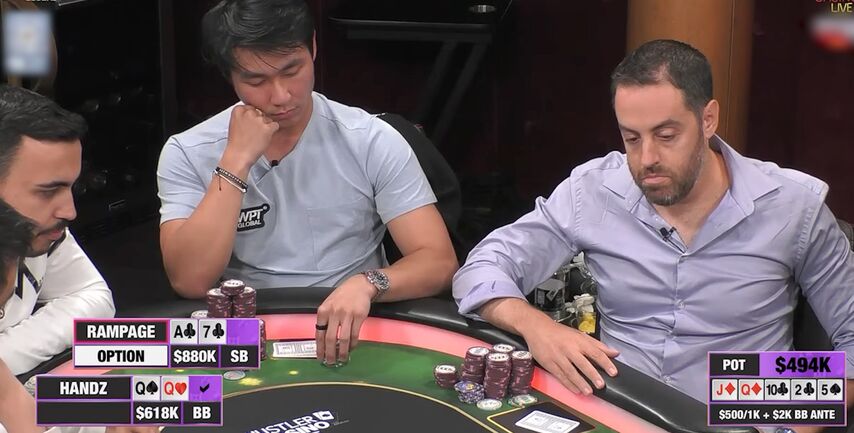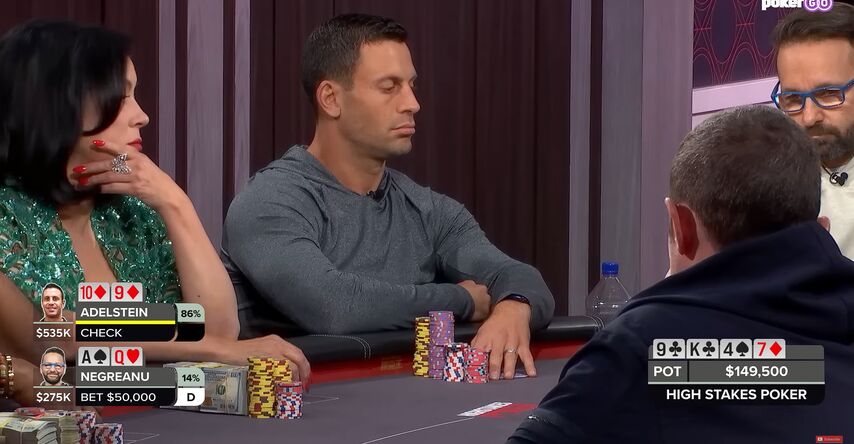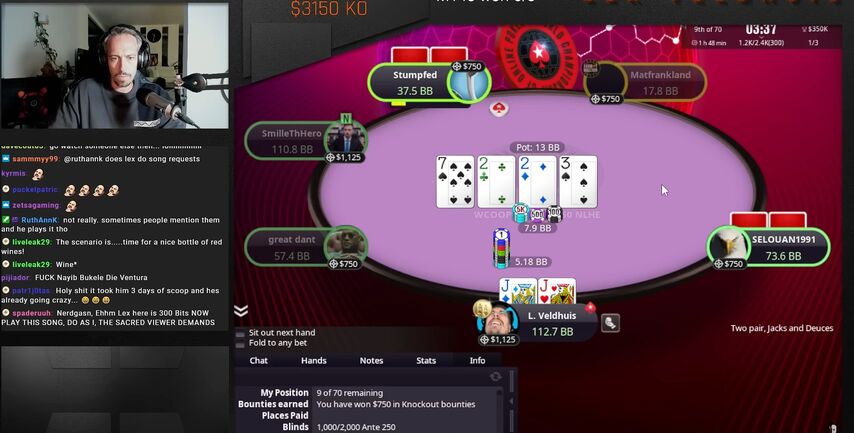If you were asked, “What is a brick in poker?”, would you know the answer?
A brick is a community card that doesn’t seem to change anything or affect much – it’s the opposite of a “scare card”. It’s usually a card that you aren’t concerned by, meaning that it doesn’t complete any straight draws, flush draws, or other hands like two pairs or three-of-a-kind.
Usually, bricks are lower cards and not cards like Aces, Kings, or Queens. When a player “bricks out”, it means their draw missed, as in “My flush draw bricked out”.
Even though a brick doesn’t look very meaningful, there’s a strategy to apply to them. Let’s chat about examples of bricks and what poker strategies to consider.

Clear Example of a Brick in Poker
Imagine that you are playing against Daniel Negreanu in a heads-up game. You have J♣ Q♣ and you’ve called a preflop raise from Daniel.
The flop comes out 10♥ J♣ 3♦, which gives you the top pair.
Negreanu bets half the pot. You decide to call and see a turn, which is a 4♠, making the board now 10♥ J♦ 3♦ 4♠.
That is the meaning of a brick. The 4♠ doesn’t appear to change much, or anything at all.
- No straight draw is completed by the 4♠.
- No flush draw is completed by the 4♠.
- The board doesn’t “pair” meaning that if your opponent had a 10 or a 3, they didn’t make three-of-a-kind.
- The 4♠ doesn’t create a backdoor flush draw.
So, unless Daniel Negreanu has a hand like A♦ 4♦, 3♥ 4♥, 4♦ 5♦, or 4♣ 4♦, it’s very unlikely that the 4♠ has helped his hand get stronger. Combinations like 10-4 and J-4 improve to two-pair, but they are very unlikely.
Do you know where to practice for free but still play for real cash prizes? Here’s a pro tip:
Partypoker runs hourly freerolls that many players don’t know about – and you can play for $50-$200 every hour, on the hour. Apply some of the brick strategies from the next section in this article and gain valuable experience, but without investing a cent of your own money.
How to Apply Strategy to a Brick in Poker
Do you need a strategy for a card that doesn’t look meaningful? Hopefully, you answered yes to that question.
How you react to bricks will be different, depending on whether you are the aggressor or the player calling bets.
Brick Strategy for Player Driving the Action
When you are betting and a brick comes on the turn or river, you’ll know that your opponents didn’t complete their draws – if they were drawing.
If you are bluffing, then betting on a brick will put pressure on players who were drawing. You can expect any draws without connection to the board will need to fold their hands. However, the brick didn’t change anything, which doesn’t make your opponent’s hand any weaker. That means you may find that players who made pairs or other combos have the same decisions they did on earlier betting rounds.

With a solid bluff strategy, you’ve got to continue barreling on bricks. The story you were telling on the flop shouldn’t be changed when a brick comes.
If you are betting for value, a brick may help your hand – or hurt it. If your opponent is drawing, then a brick on the turn or river might discourage them from continuing. That being said, bricks can make opponents with weaker hand combinations pay your bets. From their perspective, their hand didn’t become weaker when the brick came – so if they called a bet on the flop, they should also call on a brick turn or river (sometimes).

Lex continues betting in this PokerStars MTT when a brick comes on the turn. For his hand (J J), there are lots of possible bricks. Cards like an Ace or a 7 would not be bricks, but even a King or Queen could be considered a brick since they are disconnected from the board texture.
Check PokerStar’s MTT lobby for one of the best spread of events in online poker.


Brick Strategy for the Player Calling Bets
When you are the passive player in the hand – meaning that you are not driving the action with bets – how should you approach a brick turn or river?
If you are drawing, of course, a brick won’t help you. When your opponent bets on a brick card, you’ll need to decide between folding, calling, or raising. You should already know what your outs are and the probability of hitting them on the turn or river. If the brick comes on the turn, you won’t want to call a large bet with terrible odds, so only continue with a call if the price is right. Alternatively, you could fold, or 3-bet the opponent if your range supports it.
If you have a made hand already, a brick usually won’t affect your hand strength. You’ll need to carefully think about your opponent’s range, which won’t change much when a brick comes. If you think you were ahead of your opponent’s range before the brick, there’s a good chance you still are.
Play freerolls to gain experience and form your strategies for playing when bricks come. There are only upsides since you compete for cash prizes and tournament tickets without investing any of your own money – but you still get valuable experience.
- Increased first deposit bonus
- Increased rakeback and reloads
- Help with deposits and cashouts
- Access to private freerolls
- Round-the-clock support

























